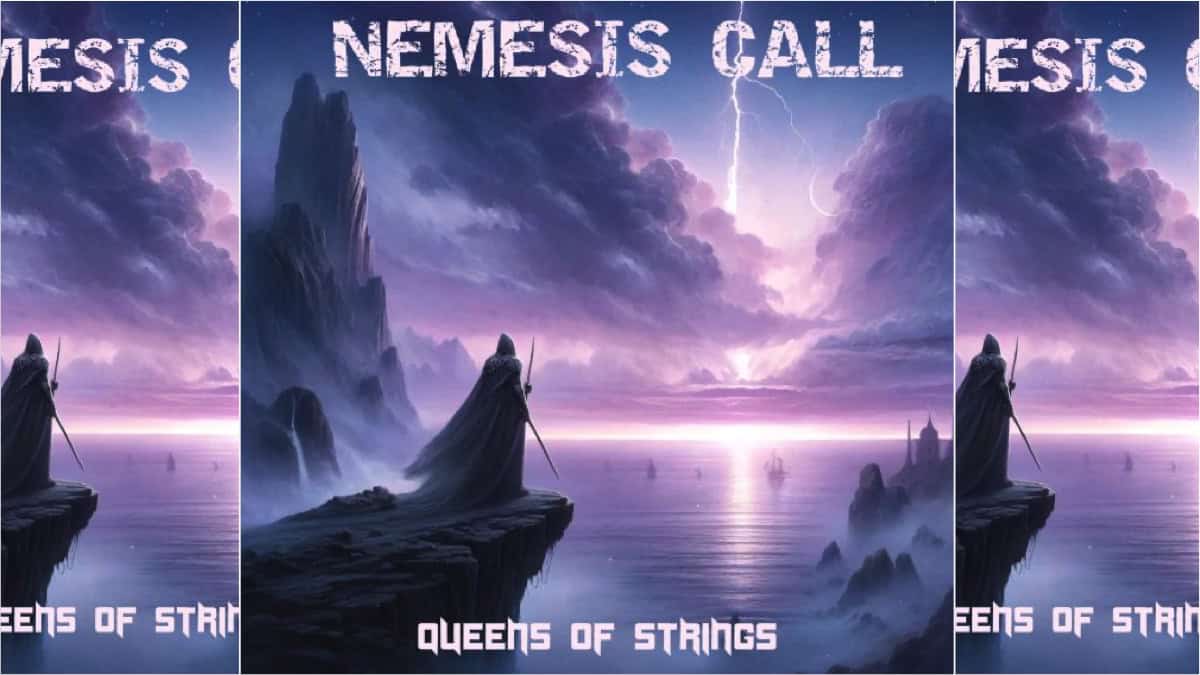Latest
Adam Nitti Technique Series – PRACTICING WITH CHORD TONES: ARPEGGIO INVERSIONS

Meet Adam Nitti
A lot of bass players are intimidated by the idea of improvising over chord changes. Although it would be beyond the scope of a single installment to present a complete and comprehensive guide to improvisation, I wanted to try and shed some light on some simple concepts that you can work on to improve your soloing. In subsequent columns, I’ll elaborate on these some more and demonstrate more of their application.
For any improviser, it is essential to have a working knowledge of chords. Chords are the building blocks of harmony, and they essentially act as ‘signposts’ that help an improviser to navigate through a chart. Most of us who have experience playing improvised walking bass lines or solos probably have at the very least assembled and memorized a collection of scale forms or patterns that we have used to play over particular chord types. Scales can be useful in the creation of musical phrases, but for any improviser is very important to have a thorough and complete understanding of chord tones and how to find them on the fingerboard.
A true test of whether or not a player can improvise effectively is to see if they can outline the changes for the listener without having any accompaniment playing underneath them, whatsoever. If you can outline the changes and harmony of a tune using nothing but your bass, then you probably are on the right track to further developing your improvised voice. It is very difficult to do this relying on scales alone… Take for example, a common 4 bar ii-V-I progression. For this example, let’s use the key of F major:
G min7 – C 7 – F maj7 – F maj7
Using modal concepts, the easiest way to navigate through this entire 4 bar phrase would probably be to use a single F major scale (F Ionian). All of the notes included in the F major scale are compatible with each of the 3 chords (G min7, C 7, and F maj7), because all 3 of these chords come from the harmonization of the F major scale. If you were playing with a band, you could simply improvise using the F major scale while a keyboard player or guitar player was comping the changes and you would sound as if you were playing ‘in key’ over the entire progression. However, if you were to just improvise using that same F major scale without any accompaniment, to the listener it would sound as if you were just noodling using a major scale in a more static fashion. In other words, you would not be effectively outlining the changes, even though you might be ‘in key.’
Now, imagine if you were to use arpeggios instead of scales to improvise over this same ii-V-I. Arpeggios are just broken chords, so obviously they are going to be the structures that most accurately mirror the sound and color of the chords they are built from. This is because they are built using chord tones only. Following the order of each chord in the F major ii-V-I progression, you could use the following arpeggio forms to improvise over each chord change:
G min7 arpeggio – C 7 arpeggio – F maj7 arpeggio – F maj7 arpeggio
Since each arpeggio only includes notes that are found in each corresponding chord, you are effectively outlining the changes in the most literal way possible.
Now, obviously the great improvisers do not rely on arpeggios alone… You would never want to improvise on a gig using nothing but chord tones. That would sound quite unseasoned and amateur-like! If you listen to a great solo in which the improviser is outlining the changes effectively, you will notice a couple of things. For one, you will hear that in many cases, they will use a chord tone or other type of guide tone on the downbeat of a chord change. This signifies harmonic transition and creates a smooth connection between phrases as these chords pass beneath them. Another thing you will notice is that rarely will a great improviser play phrases that are exclusively made up of scale fragments or sequences. Quite often, he or she will build phrases that incorporate greater intervallic distances exhibiting contour and changes in direction. Usually these intervallic distances are based on movement among connected chord tones that imply a particular color or harmonic mood.
The value of mastering the application of chord tones in the practice shed cannot be overestimated. For this reason, I have spent a lot of time over the years working on chord tone exercises. In fact, I still practice in this way today, especially in cases in which I am learning to navigate through some challenging chord progressions for the first time.
For this installment, I want to present you with some basic arpeggio form exercises that you can work on that will help you navigate the fretboard more effectively. Many of you will already be familiar with various arpeggio forms that are played starting from the root, but I want to share with you some additional patterns that can be played from any chord tone included in the arpeggio. I call these arpeggio inversion exercises.
ARPEGGIO INVERSIONS
Here are some forms you should memorize up and down the range of the neck. What’s great about them is that they allow you to play ideas that don’t always sound so ‘root-centric’. That is a big problem for many bass players starting to improvise. Because we bass players almost always have foundational roles in an ensemble, we have a tendency to want to build ideas from the root because that is what we do most. When you are improvising, you want to think more like a singer or sax player. Let go of the foundation and try to play ideas that are more rhythmically and melodically independent. Taking care to avoid using the root as a starting note for your phrases will help you to do this a little more effectively. Arpeggio inversions can help with that because they offer forms that start on the 3rd, 5th, and 7th, instead. Here are the forms for maj7, min7, and dominant 7 chords, along with example videos that demonstrate the fingerings:
CONTINUOUS 8TH NOTE EXERCISES
Using single static chords, practice playing non-stop swing 8th notes using only notes found in each arpeggio. This will feel very awkward at first, so it is imperative that you start these exercises VERY SLOWLY, taking care to only include chord tones and nothing else. Here is an example of how you might play this exercise over a C7 chord using only notes from the C7 arpeggio inversions up and down the fingerboard:
After you are able to do this at a variety of tempos for each chord, then it’s time to start practicing the same approach over more complex progressions, and then ultimately over complete tunes. Here is an example of me demonstrating how to practice continuous 8th notes using chord tones only over a ii-V-I progression in C major:
As you can see, this is a challenging way to practice over chord progressions and tunes. Be patient as you work on these. Learning how to target chord tones both with your ears and your eyes on the fingerboard will take some getting used to, but the payoff is immense. The key to becoming great at this is thinking and looking ahead as much as possible. Next time around, we’ll expand on chord tone practice strategy a little more. Until then, keep it bassy-
Adam Nitti
Gear News
New Gear: Spector Doug Wimbish USA Custom Series Basses

Spector offers Doug Wimbish USA Custom Series basses…
Spector, a leading authority in bass guitar design, unveils two new Doug Wimbish USA Custom Series basses. Synonymous with bass excellence since 1987, Wimbish collaborated with Spector’s USA Custom Shop to create the DW-4 and DW-5 models, echoing the iconic instruments that have been favored heavily throughout his recording and performing career.
These signature basses faithfully replicate Wimbish’s originals, down to the smallest details like neck contours and nut widths. Customized EMG pickups, developed in collaboration with Wimbish, capture the distinctive sound that has shaped his monumental musical impact. These models invite players to explore the feel and response that have defined Wimbish’s signature style over the years.
Available in 4-string and 5-string versions, each model boasts unique features & finish options. The DW-4 comes in Amber Stain Gloss and Black Stain Gloss options, while the DW-5 offers Dark Blue Stain Gloss and Faded Natural Gloss. Every purchase includes a certificate of authenticity signed by Doug Wimbish. Wimbish comments, “Spector took the time to get every little nuance right, and that to me is dedication and being thoughtful enough to know ‘I want to nail it,’ and they did. I’m able to pick these instruments up for the first time and play them like I’ve already had them for years.”
For more information, visit spectorbass.com/doug-wimbish-usa-signature-series/.
Photo: Doug Wimbish, pictured with the new Spector Doug Wimbish USA Custom Series basses
Bass CDs
New Campaign: Alberto Rigoni, Nemesis Call – Queens Of Strings

Italian bass master and composer ALBERTO RIGONI is thrilled to announce his brand new project “Nemesis Call – Queens Of Strings”.
Nemesis Call – Queens Of Strings features a super talented drummer from Japan (TBA) and tons of female guitarists such as SAKI, Giusy Busetto, Alexandra Zerner (TBC) and many many others (TBA). Furthermore, Alberto has also launched a Fundraising Campaign for the project. 20% of the income will be donated to Lega del Filo d’Oro legadelfilodoro.it/it, an Italian association that helps deaf and blind children!
Alberto shares:
“Hello friends and music lovers! I’m Alberto Rigoni, an Italian composer and.. a BASS GUY! Between 2008 and 2024 I released 13 solo albums, spanning from progressive, rock, ambient to funky and experimental music, which also features contributions from musicians such as keyboard wizard Jordan Rudess (Dream Theater) drummer Gavin Harrison (Porcupine Tree) and Marco Minnemann (the Aristocrats), keyboardist Kevin Moore (ex Dream Theater), singer John Jeff Soto (ex Goran Edman (ex Y. Malmsteen), bassists Nathan East, Stu Hamm (Joe Satriani), Nik West (ex Prince) and many others. I’m also bass player for BAD As, Sunset Groove Society, Kim Bingham, The Italians bands and co-producer of Mistheria’s Vivaldi Metal Project.”
Alberto on the new project Nemesis Call:
“Even if my latest album “Unexpected Lullabies”, dedicated to my newborn Vittoria Parini Rigoni, will be released on June 4th, 2024, when Vittoria came to life I felt the need to compose new music (yes, I really can’t stop!!!!!). This time will be quite challenging because I’m willing to release an instrumental ambient/prog/rock/metal album, that will feature a talented and young drummer (TBA) and tons of female guitarists (that’s why I will call the album “Queens of the Strings”) such as Alexandra Zerner, YOKA and many others (TBA/TBC)). It won’t be easy to manage all such great musicians but I will make it!! Are you ready to face a new prog experience? The album will be released in Digipack CD and in high-quality digital format approximately at the beginning of 2025.”
The Fundraising Campaign:
As an independent artist, Alberto is looking for supporters who can help him reach the budget for the production (recordings, mix, mastering, artwork etc.) of this new album and has started this fundraising campaign that will end successfully on October 15th, 2024.
Get further information about Alberto Rigoni’s new project Nemesis Call Fundraising campaign at albertorigoni.net/nemesiscal
Bass Videos
Artist Update With Bassist Derek Frank

Bassist Derek Frank…
Many of you will remember the last time I chatted with Derek Frank was back in 2017. The main thing that impressed me was how busy Derek was and how he juggled playing with many huge acts.
Now, I am happy to hear that Derek launched a new album last March titled “Origin Story” where he digs deep into his roots and pays homage to Pittsburg.
Join me as we get caught up after all these years and hear the details about the new album, how Derek gets his sound, and his plans for the future.
Photo, Stephen Bradley
Featured Videos:
Visit Online:
www.derekfrank.com
www.instagram.com/derekfrankbass
www.youtube.com/derekfrankbass
www.facebook.com/derekfrankbass
Latest
This Week’s Top 10 Basses on Instagram

Check out our top 10 favorite basses on Instagram this week…
Click to follow Bass Musician on Instagram @bassmusicianmag
FEATURED @foderaguitars @bqwbassguitar @lecomptebass @xvector_basses @vuorensaku_guitars @phdbassguitars @meridian_guitars @sterlingbymusicman @ramabass.ok @overwaterbasses
Gear News
New Gear: Alberto Rigoni Signature Bass, the VPR5 by Gaetano Costanzo!

Alberto Rigoni Signature Bass, the VPR5 by Gaetano Costanzo!
Internationally renowned bassist ALBERTO RIGONI (soloist, BAD AS, Vivaldi Metal Project, TwinSpirits, etc.) is proud to announce the release of his signature bass VPR5 made by renowned Italian luthier Gaetano Costanzo!
The bass is entirely handmade in Italy, without the use of CNC or other machinery, and has rather special features. The VPR is a 5-string bass (but also available as a 4-string) with 30 frets, Seymour Duncan pickups, Music Man Alnico style, passive electronics (volume, tone and a switch to select series/parallel/single-coil mode), alder body, and American maple neck and fingerboard. Gotoh tuners that ensure perfect intonation. The bass is totally painted white (nitro finish) but other colors can be requested. The VPR has a weight of about 2.9 kg and suitable for any genre.
For more information contact Gaetanobass77@gmail.com or visit online at www.instagram.com/gaetanocostanzoluthier or www.facebook.com/GaetanoCostanzoLuthier

















